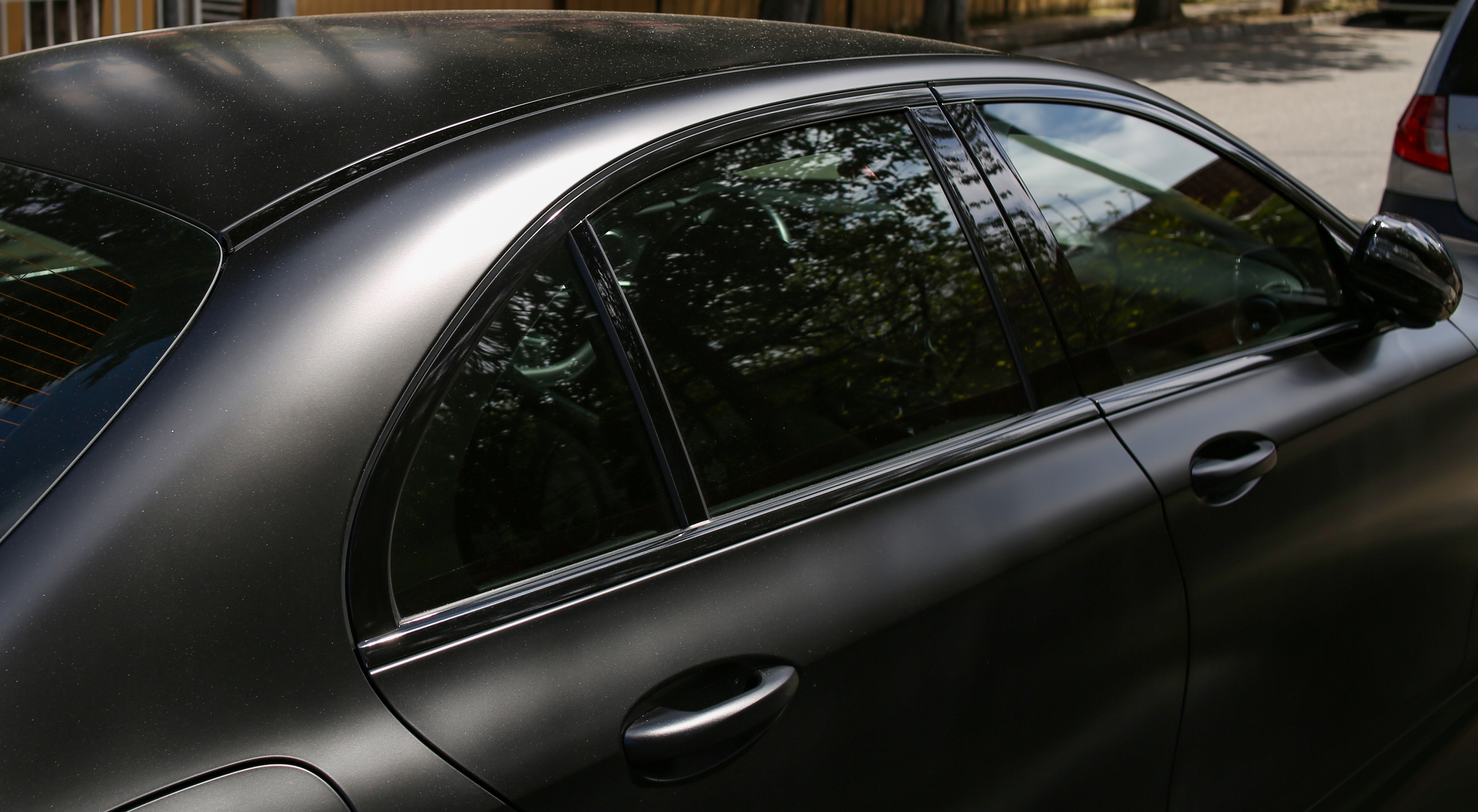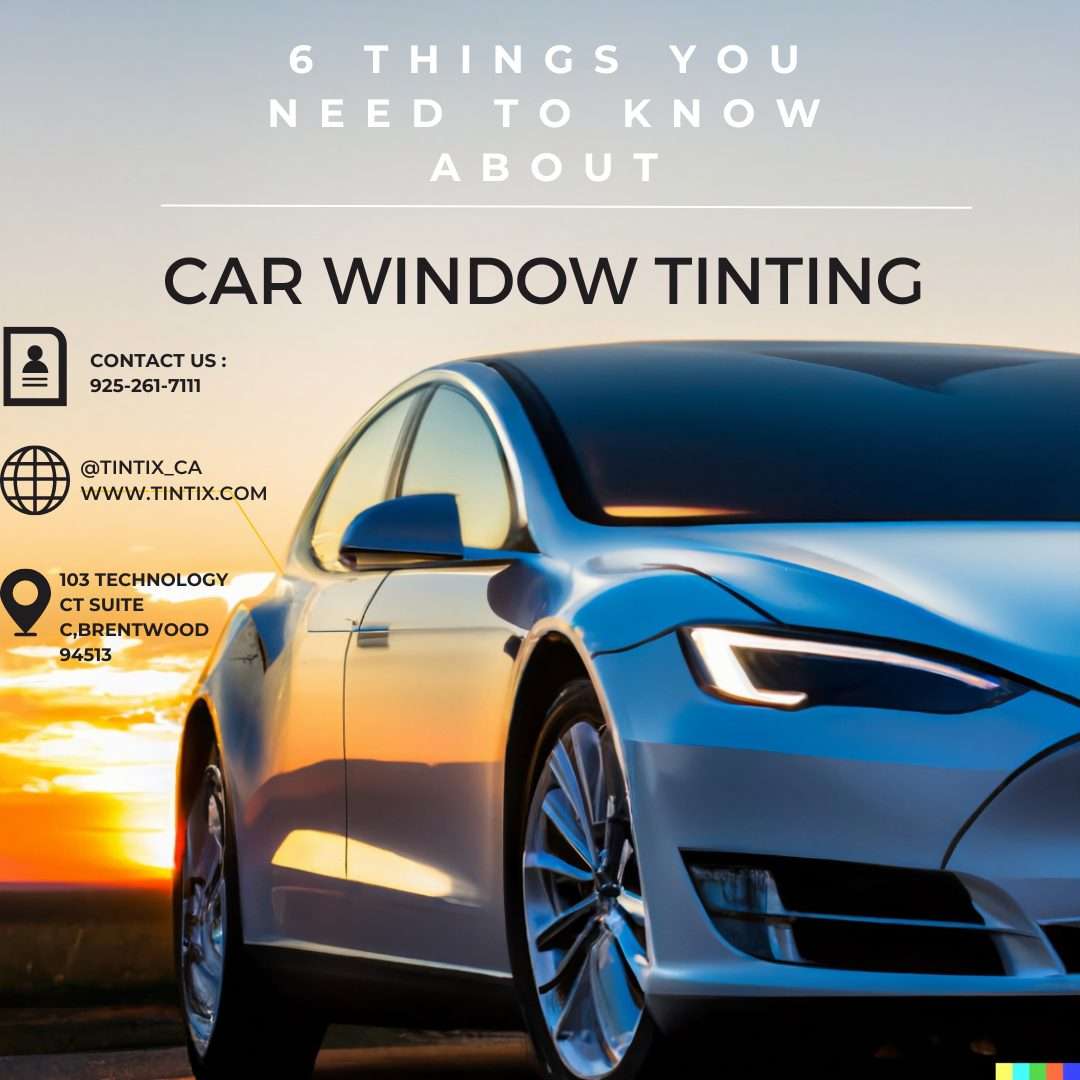Step-by-Step for Your Appointment with Davinci of Michigan
A Comprehensive Guide to Understanding Vehicle Home Window Tint and Its Benefits
Vehicle home window tinting serves even more than just an aesthetic purpose for cars. It provides different types, each with distinct features and advantages. Recognizing these alternatives, in addition to legal regulations and upkeep tips, is important for any lorry proprietor. The advantages might greatly boost driving comfort and automobile long life. As one explores the subtleties of home window tinting, the question develops: what kind of tint is ideal matched for individual requirements?
Recognizing Automobile Home Window Color: What It Is and Exactly how It Functions
Car home window color acts as a safety barrier that enhances automobile looks while offering useful advantages. This thin movie is related to the indoor surface of auto windows, lowering glare and obstructing dangerous ultraviolet (UV) rays from the sun. By filtering system sunshine, auto window color helps to control the interior temperature of the car, resulting in raised comfort for passengers and lowered dependence on air conditioning.Additionally, it safeguards the automobile's inside from fading, preserving both upholstery and control panel products. The tint can additionally boost privacy, making it harder for outsiders to see inside the vehicle. Certain types of window color can enhance security; in the event of a crash, the film helps hold destroyed glass with each other, reducing the risk of injury from flying shards. Generally, vehicle home window tint serves both aesthetic and useful functions, making it a prominent choice among lorry proprietors.
Sorts Of Home Window Color: A Summary of Options
When thinking about window color choices, several kinds are offered, each with distinct features. Dyed, metalized, and ceramic window colors provide differing levels of heat being rejected, UV protection, and visual charm. Understanding these differences can help lorry proprietors make notified choices based upon their choices and requirements.
Dyed Home Window Tint
Dyed window color represents a popular choice amongst cars and truck owners looking for a affordable and reliable means to improve their automobile's aesthetics and privacy. This kind of tint is created by positioning a layer of dye in between an adhesive layer and a safety finishing, resulting in a dark appearance that decreases glow and boosts visual convenience. While dyed home window tint effectively obstructs hazardous UV rays, it might not supply the very same level of warm being rejected as other color types. Furthermore, its color can fade over time, possibly decreasing its effectiveness. In spite of these downsides, dyed window tint stays preferred for its cost-effectiveness and ability to supply a streamlined, trendy look to different vehicle versions.
Metalized Window Tint
Metalized home window color supplies an equilibrium of style and performance, making it a prominent choice among cars and truck proprietors. This sort of color includes metal particles within the film, improving both visual charm and warm denial. The reflective top quality of metalized tint aids to lower glow and boost personal privacy, while additionally giving UV defense, which safeguards the lorry's inside. Furthermore, metalized window color can strengthen window strength, possibly stopping smashing during mishaps. It is essential to note that the metallic parts can conflict with digital signals, such as General practitioner and cell phone function. On the whole, metalized window tint provides an effective service for those seeking a mix of toughness, appearance, and sun defense for their automobiles.
Ceramic Window Color
Ceramic window color represents a sophisticated option in the range of auto window movies, providing unique benefits over standard tints. Unlike colored or metalized films, ceramic tints utilize innovative ceramic particles, which effectively turn down warm and UV rays without endangering visibility. This innovation assures that cars remain cooler, lowering reliance on air conditioning and enhancing gas efficiency. Furthermore, ceramic window tints are less most likely to hinder electronic tools, such as GPS or mobile signals, making them a sensible choice for contemporary lorries. Their longevity and scratch resistance contribute to a longer life expectancy contrasted to various other kinds of tints. Generally, ceramic home window color provides premium performance, convenience, and protection, making it a favored option for discerning car owners.
Benefits of Auto Window Tint: Beyond Visual Appeals
While lots of people associate car home window color with enhanced style, its benefits extend far beyond plain visual appeals. One significant benefit is heat decrease; home window color can obstruct up to 99% of damaging UV rays, protecting and keeping the interior colder furniture from fading. This not just boosts comfort during warm weather but also reduces dependence on cooling, bring about boosted gas efficiency.In addition, vehicle home window color offers an added layer of personal privacy and safety. Tinted home windows make it hard for outsiders to see inside the automobile, which can discourage burglary and secure belongings. Additionally, several tints enhance the glass, minimizing the possibility of smashing in the event of an accident, consequently enhancing safety.In enhancement to these functional advantages, car home window tint can additionally add to glow decrease, enhancing exposure for passengers and motorists alike. This multifaceted strategy to comfort and safety makes home window color an important financial investment for car proprietors.
Legal Considerations: Tinting Laws by State
Prior to committing to vehicle window color, vehicle proprietors should browse a complex landscape of tinting regulations that differ by state. Each state has specific legislations governing the allowable degrees of tint darkness and reflectivity for various home windows, consisting of windscreens, front side windows, and rear windows. These laws frequently consist of visible light transmission (VLT) percents, which determine just how much light can go through the tinted glass.Some states permit darker tints on rear windows while restricting front side and windscreen colors for security factors. Furthermore, particular states may need a certification from the producer to validate conformity with tinting laws. Breaching these guidelines can lead to penalties, required elimination of the color, or both. It is necessary for vehicle owners to research their state's legislations extensively to assure lawful conformity prior to mounting home window tint. This diligence can save time and money over time.
Choosing the Right Tint: Variables to Consider
When choosing the proper window tint for a lorry, numerous essential aspects come right into play. Tint darkness levels, UV protection scores, and conformity with legal regulations are essential factors to consider to ensure both appearances and performance. Examining these elements will aid people make an informed choice that satisfies their demands and complies with regional laws.
Color Darkness Degrees
Selecting the appropriate color darkness degree is important for achieving the preferred balance in between aesthetic appeals and functionality in vehicle window tinting. Various states go to this web-site have varying lawful policies regarding tint darkness, which can affect the choice. Generally, tints are determined in percents, with reduced portions showing darker shades. Darker tints offer enhanced privacy and a streamlined appearance but can minimize exposure, especially during the night. Conversely, lighter tints preserve an even more open feel, ensuring appropriate visibility while still giving some heat and glow reduction. When making a decision, people should consider their driving routines, local legislations, and individual preferences. Eventually, the appropriate tint darkness degree enhances the automobile's look while making certain safety and compliance with legal criteria.
UV Protection Score
Color darkness degrees play a significant function in the general effectiveness of car home window tinting, but another essential element to examine is the UV security ranking of the picked color. This ranking indicates the percent of damaging ultraviolet rays that the tint can block. Top notch colors frequently offer 99% or more UV protection, protecting travelers and the car's interior from sun damage. Davinci of Michigan. Prolonged exposure to UV rays can lead to skin problems and fading of furniture, making a high UV defense ranking necessary for health and wellness and durability. When choosing window tint, consumers should prioritize this ranking along with darkness levels to guarantee optimum convenience and security while driving. Understanding these factors help in making an educated decision when buying auto home window tinting
Legal Regulations Compliance
Understanding neighborhood lawful guidelines is essential for any person taking into consideration automobile window tinting. Each state or area has particular laws governing the allowed degrees of tint darkness and reflectivity for various windows. These regulations frequently specify the noticeable light transmission portion, figuring out just how much light can go through the tinted glass. Non-compliance can lead to penalties, required elimination of the tint, or concerns during vehicle examinations. Furthermore, some areas might have limitations on using particular tinting materials, calling for customers to select products that meet safety and security requirements. It is essential for lorry owners to investigate their neighborhood legislations extensively before choosing window tint to assure compliance and prevent possible lawful complications.

Setup Refine: DIY vs. Specialist Providers
How does one choose between a DIY installation and hiring professional services for car home window tinting? The selection often rests on budget, experience, and desired results. A do it yourself approach can be cost-effective, allowing individuals to minimize labor expenses. It calls for a particular degree of skill and knowledge about the tinting procedure. Those that are careful and individual might discover success with DIY kits readily available in the market.Conversely, specialist services provide competence and premium materials, making sure a perfect finish. Experts typically guarantee their job, supplying satisfaction versus prospective problems such as peeling off or gurgling. Additionally, they are familiar with regional laws pertaining to tinting, which can be complex for the typical automobile owner.Ultimately, the decision shows an equilibrium between expense, individual capacity, and the expected quality of the tinting work. Each choice has its advantages, and the ideal selection depends on specific conditions and choices.
Upkeep Tips: Keeping Your Tint in Top Condition

Often Asked Concerns
How Much Time Does Home Window Tint Usually Last on a Vehicle?
Window color commonly lasts between 5 to 10 years, depending on variables such as high quality, application, and environmental conditions. Normal maintenance and correct treatment can expand its life-span, ensuring perfect efficiency and look over time.
Can Window Tinting Damage My Auto's Original Glass?
Home window tinting, when used appropriately, does not damage a car's initial glass. However, improper setup or low-grade products might result in problems like gurgling or peeling, possibly impacting the glass's honesty in time.
Is Home Window Tinting Safe for All Sorts Of Automobiles?
Window tinting is generally safe for a lot of automobiles, supplied the film follows regional guidelines and is effectively applied. Some specialized cars may require particular considerations, making it necessary to consult professionals before setup.
Will Home Window Tinting Gap My Car Warranty?
The concern of whether home window tinting spaces a cars and truck service warranty often depends on the producer's policies. Normally, if the tint does not damage the automobile, service warranties commonly remain undamaged. Seeking advice from the dealership is recommended.
Can I Eliminate Window Color Myself if Needed?
Getting rid of window tint oneself is feasible, yet it calls for cautious interest to avoid damaging the glass. People need to utilize proper tools and techniques to assure an effective removal without leaving adhesive deposit or scratches behind. While colored window tint successfully blocks damaging UV rays, it may not supply the exact same level of warmth being rejected as other color types. Ceramic home window tint stands for a sophisticated option in the range of automobile home window films, offering distinctive advantages over conventional tints. Prior to committing to vehicle window color, lorry proprietors need to navigate an intricate landscape of tinting policies that differ by state. These policies often include visible light transmission (VLT) portions, which determine exactly how much light can pass via the colored glass.Some states permit darker colors on rear windows while restricting front side and windscreen tints for safety factors. Tint darkness levels play a substantial role in the total efficiency of car home window tinting, but an additional important variable to evaluate is the UV security ranking of the selected color.